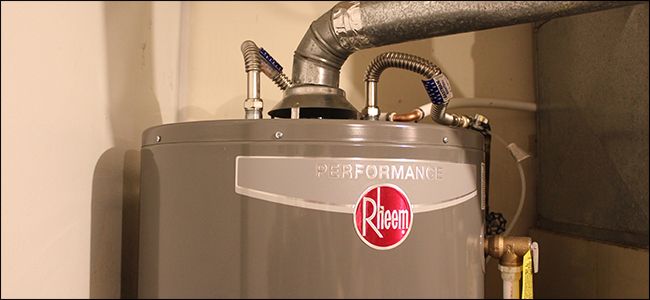Step-by-Step Guide to Caring for Your Home's Hot Water System
Step-by-Step Guide to Caring for Your Home's Hot Water System
Blog Article
The article down below relating to How to Maintain a Hot Water Heater in a Few Simple Steps is fairly interesting. Give it a try and make your own personal final thoughts.
:max_bytes(150000):strip_icc()/how-to-drain-a-water-heater-2719055-hero-35f0548b0f1f42f0b13ba96a33ab8da2.jpg)
Warm water is necessary for daily convenience, whether it's for a rejuvenating shower or cleaning dishes. To guarantee your hot water system runs successfully and lasts much longer, routine upkeep is key. This write-up gives useful tips and insights on exactly how to preserve your home's hot water system to prevent interruptions and pricey repair work.
Introduction
Preserving your home's hot water system could seem difficult, but with a couple of simple actions, you can ensure it operates smoothly for many years to find. This guide covers every little thing from comprehending your warm water system to DIY upkeep pointers and understanding when to call specialist assistance.
Importance of Preserving Your Hot Water System
Normal maintenance not just extends the life expectancy of your hot water system however additionally ensures it operates efficiently. Neglecting upkeep can lead to decreased performance, higher power costs, and even premature failing of the system.
Indicators Your Hot Water System Demands Maintenance
Understanding when your hot water system requires focus can prevent significant concerns. Keep an eye out for indications such as irregular water temperature, strange sounds from the heating system, or rusty water.
Recognizing Your Warm Water System
Before diving right into maintenance jobs, it's useful to comprehend the standard elements of your hot water system. Usually, this includes the water heater itself, pipelines, anode rods, and temperature level controls.
Month-to-month Upkeep Tasks
Regular month-to-month checks can assist capture minor issues before they escalate.
Flushing the Water Heater
Flushing your hot water heater gets rid of debris buildup, enhancing performance and extending its life.
Checking and Replacing Anode Rods
Anode poles prevent rust inside the storage tank. Checking and replacing them when worn is crucial.
Checking and Adjusting Temperature Setups
Readjusting the temperature setups guarantees ideal performance and safety and security.
DIY Tips for Upkeep
You can perform numerous maintenance jobs on your own to maintain your warm water system in leading problem.
Checking for Leakages
Consistently examine pipes and connections for leakages, as these can cause water damage and greater costs.
Examining Stress Alleviation Valves
Evaluating the stress relief valve guarantees it functions properly and stops excessive stress buildup.
Insulating Pipes
Insulating warm water pipelines decreases warm loss and can conserve energy.
When to Call a Specialist
While DIY upkeep is beneficial, some concerns need specialist experience.
Complicated Concerns Requiring Expert Aid
Examples consist of significant leakages, electric problems, or if your hot water heater is regularly underperforming.
Regular Professional Upkeep Advantages
Expert maintenance can include comprehensive evaluations, tune-ups, and making certain compliance with security criteria.
Final thought
Routine upkeep of your home's warm water system is vital for performance, long life, and price financial savings. By adhering to these tips and knowing when to look for expert help, you can make sure a trusted supply of warm water without unexpected disturbances.
How to Maintain an Instant Hot Water Heater
Before tinkering with your hot water heater, make sure that it’s not powered on. You also have to turn off the main circuit breaker and shut off the main gas line to prevent accidents. Also turn off the water valves connected to your unit to prevent water from flowing into and out of the appliance. 2. When you’re done, you have to detach the purge valves’ caps. These look like the letter “T†and are situated on either side of the water valves. Doing so will release any pressure that has accumulated inside the valves while at the same time avoid hot water from shooting out and burning your skin. 3. When the purge valves’ caps are removed, you have to connect your hosing lines to the valves. Your unit should have come with three hoses but if it didn’t, you can purchase these things from any hardware or home repair shops. You can also get them from retail stores that sell water heating systems. Read the user’s manual and follow it to complete this task properly. When the hosing lines are connected, open the purge port’s valves. 4. You should never use harsh chemical cleaners or solutions when cleaning your unit. Make use of white vinegar instead. It should be undiluted and you’ll probably use about 2 gallons. 5. Now flush your water heater. This task should probably take about 40 minutes. We can’t give you specific directions for this because the procedure is carried out depending on the type, model and brand of your heater. With that being said, refer to the user’s manual. 6. When you’re done draining the unit, you have to turn off the purge port valves again. Remove the hosing lines that you earlier installed on each of the water valves. Put the valve caps (purge port) back in their respective places and be very careful so as not to damage the rubber discs that are found inside these caps. 7. Now that everything’s back in place, check your user’s manual again to find out how to reactivate your water heating system. 8. Once it is working, turn one of your hot water faucets on just to let air pass through the heater’s water supply pipes. Leave the tap on until water flows smoothly out of it. https://www.orrplumbing.com/blog/2014/september/how-to-maintain-an-instant-hot-water-heater/

We hope you liked our topic on How to Maintain a Hot Water Heater in a Few Simple Steps. Many thanks for taking time to read our blog post. Sharing is good. Who knows, you might be helping someone out. Thank-you for your time invested reading it.
Click Here Report this page